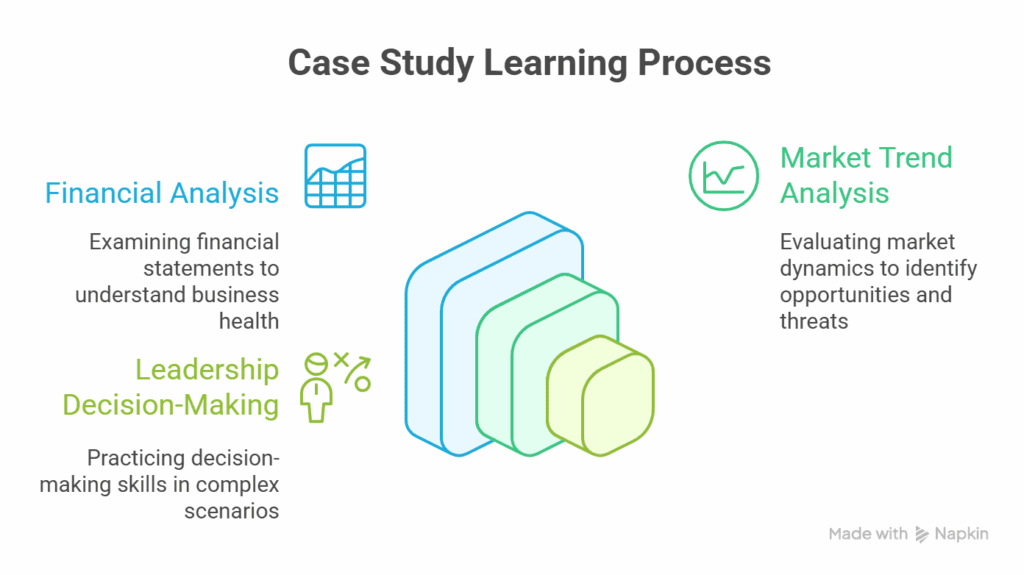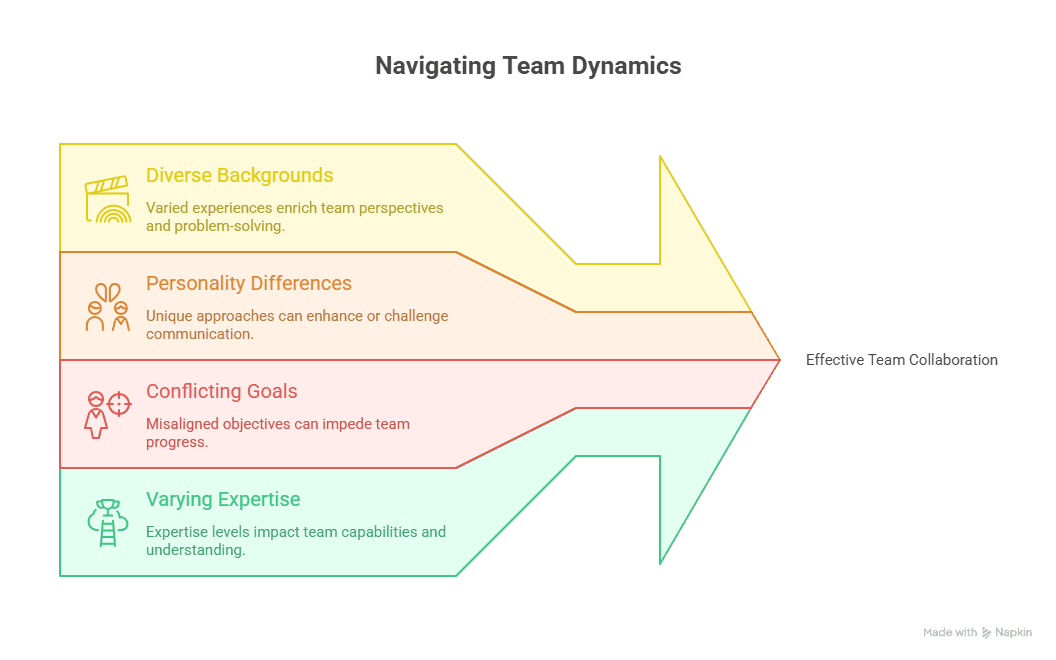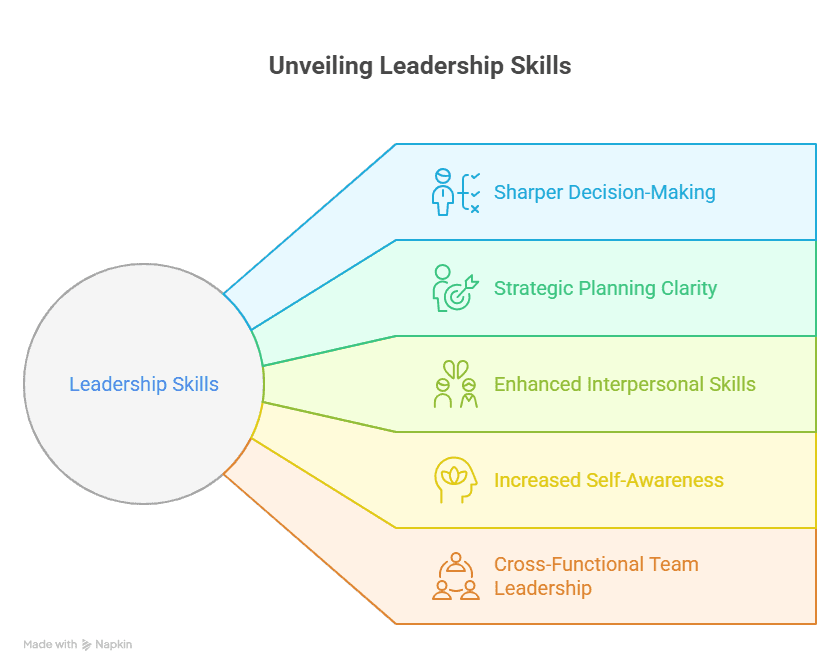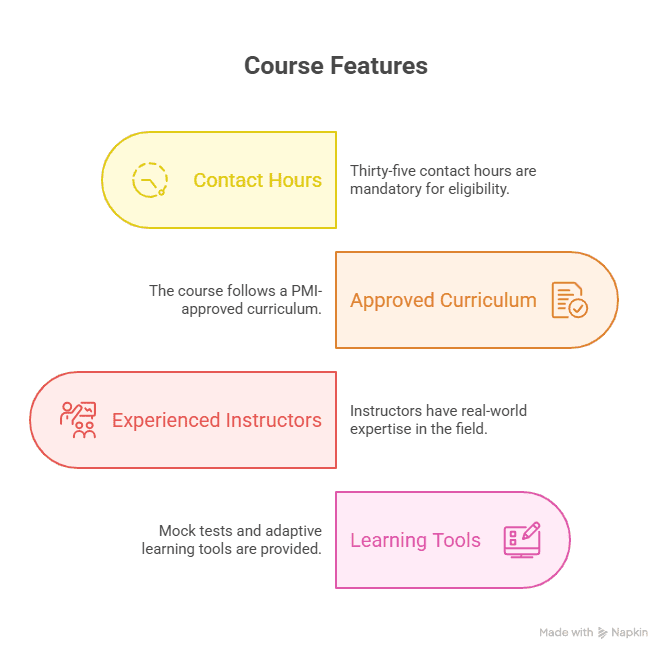- Why Choose This Senior Professional Management Programme
- Cracking the Code: Inside the AGMP Curriculum
- Learning That Sticks: The Case Study Method
- Networking Magic: The Dubai Connection
- Career Acceleration: Climbing the Ladder
- More Than a Degree: A Leadership Experience
- What Makes This Program Shine
- The Future of Top Management Courses in 2025
When you’ve built a career, gained years of managerial experience, and already proven yourself in leadership roles, there comes a point when you start asking: what’s next? That’s where a Management Program designed for senior professionals becomes a real game-changer.
In Dubai, a city that thrives on ambition and international opportunity, one program consistently stands out for executives who want to sharpen their leadership skills and step into bigger roles: the IIM Ahmedabad executive program – officially known as the Accelerated General Management Programme (AGMP).
This isn’t about adding another certificate to your profile. It’s about expanding your vision, building strategic decision-making confidence, and preparing for complex challenges in the modern global business environment. If you’re exploring a senior management course in Dubai, here’s why this program makes all the difference.
Why Choose This Senior Professional Management Programme
Picking the right executive education is no small decision. Dubai is full of options, but not every program speaks to the unique needs of experienced leaders. The GMP for senior professionals at IIM Ahmedabad is designed with exactly this in mind.
The approach is simple yet powerful: blend the academic rigour of a world-class institution with practical tools needed for today’s high-speed corporate world. This balance makes it ideal for executives who already know how to run teams but now want to lead entire business units, drive transformation, and prepare for CXO-level roles.
Unlike short workshops or overly theoretical classes, this is structured as a Leadership program by IIM Ahmedabad that challenges the way you think, debate, and solve problems. It equips you not just to manage change but to lead it — whether in Dubai, across the Middle East, or on a global stage.
Did you know? IIMA is the only IIM with a direct presence in Dubai!
Cracking the Code: Inside the AGMP Curriculum
The curriculum is where this Dubai executive education program truly shines. Instead of keeping finance, marketing, operations, and HR in silos, the modules connect these functions into one complete strategic picture — just like a real business does.
Take the “Corporate Strategy” sessions, for example. Through rich case studies, executives debate growth plans, cross-border expansions, and complex M&A decisions. These aren’t abstract examples; they’re drawn from real companies facing the same challenges global leaders face today.
Another highlight is the strong focus on Innovation and Change Management. In 2025, disruption is constant — new-age business models, AI-driven strategies, and sustainability demands are redefining leadership. The top management course 2025 from IIM Ahmedabad prepares participants not just to react but to anticipate and lead through disruption.
By the end of the program, what you gain isn’t just knowledge — it’s a new way of thinking. You learn to connect dots across disciplines, build high-performance strategies, and bring clarity to uncertain situations.
Learning That Sticks: The Case Study Method
What truly makes this program unique is the case study learning approach. Instead of lectures, you dive into real-world problems — analysing market trends, financial data, and leadership dilemmas faced by global organisations.
Picture debating in a group discussion about whether a company should enter a new market, restructure its business, or lead an acquisition. The room is filled with senior professionals from different industries, each bringing unique perspectives. That diversity turns every session into a masterclass in leadership and decision-making.
One example often shared is the module on “Decision Analysis,” where participants break down uncertainties, weigh risks, and argue for optimal strategies. The goal isn’t finding the one “right” answer, but developing the instinct and process to make strategic decisions under pressure.
By the time you complete the program, you’re not just better at theory — you’re sharper, more confident, and equipped with practical tools that translate directly into boardroom success. That’s the true mark of a Leadership program by IIM Ahmedabad.

Networking Magic: The Dubai Connection
One of the biggest strengths of a Management Program in Dubai is the network it creates. The GMP for senior professionals brings together leaders from the UAE, Saudi Arabia, India, the UK, Lebanon, and beyond. The cohort usually includes executives from multinational corporations, ambitious entrepreneurs, and innovators from fast-growing startups.
This diversity isn’t just interesting — it’s a powerful learning tool. In group discussions and assignments, participants often discover new ways of thinking that they would never have arrived at on their own. Conversations with Arab professionals can reveal the nuances of conducting business in the Middle East. A logistics leader might shed light on global supply chain challenges. A tech entrepreneur might break down the latest approaches in digital marketing.
And the benefits don’t end with the classroom. These connections often become lasting professional networks. In fact, many participants collaborate on projects, investments, or ventures long after the program ends. The timing couldn’t be better either. According to reports, Dubai saw a 15% year-on-year rise in foreign direct investment in 2025, strengthening its role as a global business hub. For senior professionals, studying here means gaining access to a thriving ecosystem of opportunities — and the people who can open doors to them.
Career Acceleration: Climbing the Ladder
For many participants, the IIM Ahmedabad executive program is a turning point. Senior managers who once felt “stuck” in their careers find themselves thinking like executives. The shift comes from rigorous case studies, debates with peers, and insights from industry experts that sharpen strategic decision-making skills.
Within months of completing the program, it’s common to see professionals step into bigger leadership roles. They’re not just managing teams anymore; they’re leading business units, driving change, and presenting strategies at the boardroom level. Their ability to communicate complex ideas with clarity, manage cross-functional teams, and approach problems with a global perspective sets them apart.
The financial rewards are significant, too. While results differ, data from executive peers in Dubai shows a steep rise in earnings post-program. What’s striking is that the salary increase reflects more than just numbers — it represents the value participants can now deliver to their organisations.
| Role Before AGMP | Estimated Annual Salary Before (Approx. AED) | Role After AGMP | Estimated Annual Salary After (Approx. AED) | My Personal Percentage Increase |
| Mid-Level Manager | 250,000 | Senior Manager / Department Head | 400,000 – 550,000 | 60% – 120% |
| Functional Head | 350,000 | Director / Vice President | 600,000 – 850,000 | 70% – 140% |
| Entrepreneur (Early Stage) | Varies (often lower initial take-home) | Entrepreneur (Successful Scale-up) | Significantly higher (potential for exponential growth) | Exponential |
Note: These figures are based on peer outcomes and industry reports. Actual results vary by sector, role, and performance. Dubai’s tax-free earnings further enhance the take-home benefit.
More Than a Degree: A Leadership Experience
The Senior management course in Dubai isn’t just about gaining new tools; it’s about changing the way leaders think. A strong emphasis on empathy, ethics, and sustainability ensures participants graduate as responsible leaders, not just managers. Modules such as “People Management and Leadership” or “Aligning Strategy, Culture, People & Performance” help professionals see their teams not just as resources but as individuals with ambitions and challenges.
The focus on ESG — Environmental, Social, and Governance factors — is equally transformative. Today’s global business landscape demands leaders who can balance profit with responsibility. The program equips participants to integrate sustainability into business strategies, making them future-ready leaders.
What Makes This Program Shine
So, what truly sets the Leadership program IIM Ahmedabad apart? A few things stand out:
- Global Reputation: The Institute of Management Ahmedabad carries prestige not just in India but globally. With its new campus in Dubai International Academic City (DIAC), its presence has only grown stronger.
- Case Study Learning: Unlike theory-heavy courses, this program uses practical case studies to simulate real-world challenges, making learning active and memorable.
- Exceptional Faculty: Taught by industry experts and consultants, the sessions blend academic rigour with practical insights.
- Peer Diversity: Learning alongside leaders from diverse industries brings fresh perspectives and innovative solutions.
- Strategic Location: Dubai itself is a global business classroom, offering exposure to live markets, regional leaders, and international companies.
The Future of Top Management Courses in 2025
Management education is evolving, and Dubai is at the centre of this shift. The Top Management Course 2025 is marked by:
- Digital & AI Competencies: Business schools now ensure leaders are fluent in AI, digital transformation, and data-driven strategies.
- Responsible Leadership: ESG integration is becoming standard for every global leader.
- Cross-Cultural Skills: Managing diverse teams and markets is a necessity, not a bonus.
- Learning by Doing: Passive lectures are out; interactive, case-driven methods are the future.
The IIM Dubai program is built for exactly these needs. It prepares senior leaders not just to handle today’s business environment but to thrive in tomorrow’s uncertain, fast-changing landscape.
FAQs: Your Questions About Senior Management Programs Answered
What type of work experience is required for this Management Program in Dubai?
The GMP for senior professionals is not an entry-level program. It’s designed for those with around 5–10 years of managerial experience after graduation. But the number of years isn’t the only factor.
What really matters is the quality of your work, your ability to take on leadership roles, and your appetite for growth. Typical cohorts include participants with anywhere between 7 and 20+ years of experience. This mix makes classroom case studies and group discussions rich and insightful, reflecting real-world challenges from multiple industries.
In what ways does the AGMP influence salary and career development for senior professionals in Dubai?
Career impact is one of the biggest reasons executives choose the IIM Ahmedabad executive program. In the Dubai market, a globally recognised credential from the Indian Institute of Management carries weight. Employers value graduates who can combine strategic decision-making, leadership skills, and cross-functional business understanding. Salary increases vary, but many participants report jumps of 60–100% as they move into more senior roles. With Dubai’s tax-free income, the take-home benefits become even more attractive.
Is the IIM Ahmedabad AGMP only for Indian professionals in Dubai, or is it truly international?
While many Indian professionals in Dubai do opt for this program, the IIM Dubai program is genuinely international. Batches typically include executives from across the MENA region, Europe, and Asia.
This diversity is intentional because it mirrors the global business environment in which senior leaders operate. The exchange of perspectives is one of the biggest strengths of the program.
What is the blended learning format (Dubai and Ahmedabad campus sessions) like for senior professionals?
The senior management course in Dubai follows a blended structure designed for working professionals. Sessions are held face-to-face in Dubai over consecutive weekends, which means minimal disruption to your work.
Later, an immersive set of sessions at the Institute of Management Ahmedabad campus allows participants to dive deeper into concepts and connect with the broader IIM community. This balance ensures learning is continuous, practical, and easy to apply at work in real time.
What type of career services or placement support does IIM Ahmedabad offer in Dubai after the AGMP?
Unlike a full-time MBA, the AGMP does not run a traditional placement process. However, it offers powerful career support through:
- Networking events and alumni gatherings in Dubai and globally.
- Workshops and sessions on career planning and business strategies.
- Access to the IIM Ahmedabad alumni network, one of the strongest globally.
This network is often the biggest advantage, opening doors to career opportunities in global business without the need for a formal placement service.
How does the AGMP prepare participants for the future of management, especially with AI and sustainability?
The programme is designed to be forward-looking. Topics like AI, machine learning, digital transformation, and sustainable business strategies (ESG) are integrated into the curriculum.
Faculty use the case study method to discuss not just today’s business environment, but also the trends shaping tomorrow. This ensures participants graduate with the ability to adapt, lead, and stay relevant in a fast-changing world. It’s why the AGMP is often described as a Top Management Course 2025.
An Enduring Leadership Leap
At its heart, the IIM Ahmedabad executive program is more than a credential — it’s a turning point. For senior professionals, it’s about shifting from functional expertise to becoming a leader who can navigate the full spectrum of business. The program sharpens strategic decisions, enhances leadership skills, and equips participants to thrive in an unpredictable business environment.
The biggest takeaway isn’t just higher pay or a fancier title. It’s the confidence to tackle complex challenges with clarity, the ability to inspire high performance in teams, and the foresight to lead responsibly in a global marketplace.
Add to this the strength of the IIM Ahmedabad brand, a world-class network of peers and alumni, and the exposure to industry experts — and you have a program that truly accelerates leadership growth.
For senior executives in Dubai — or anywhere — looking to step into transformative leadership roles, the AGMP represents a clear next step. It’s an investment in yourself, one that pays back through skills, networks, and opportunities that last a lifetime.
👉 If you’re ready to elevate your leadership journey, explore the IIM Ahmedabad General Management Programme in Dubai. It’s not just about advancing your career — it’s about becoming the leader the future demands.




